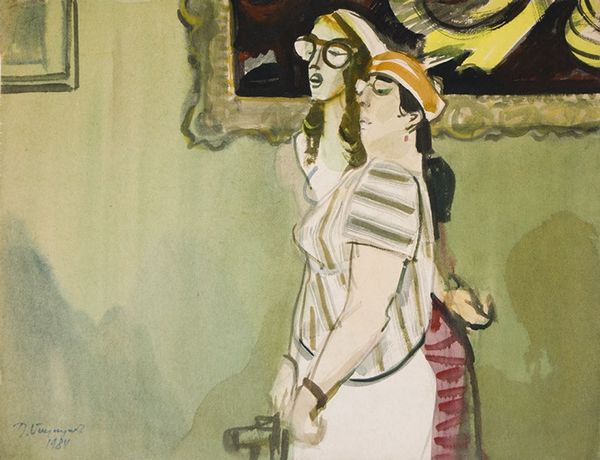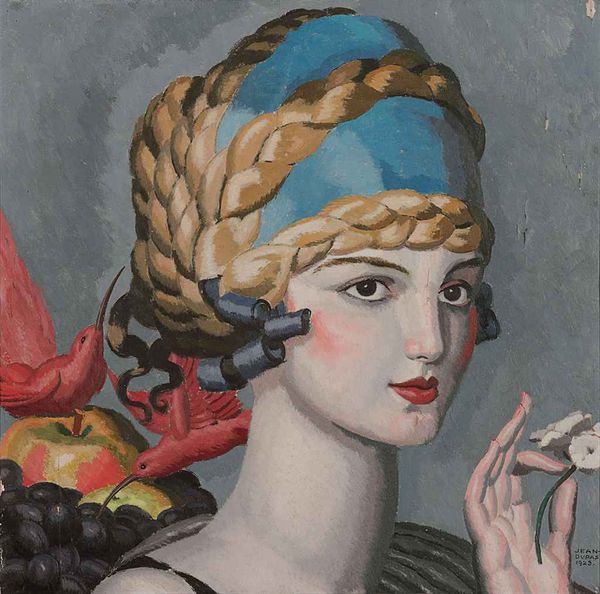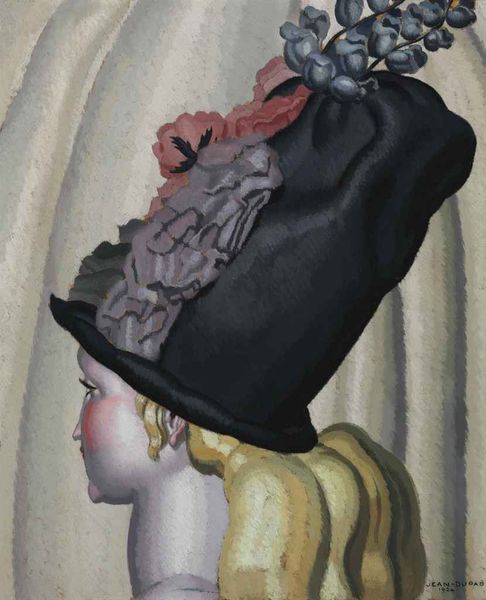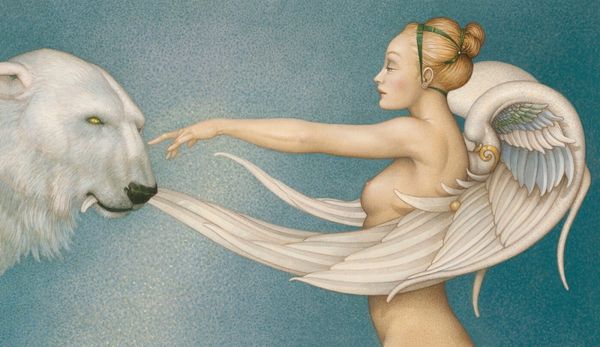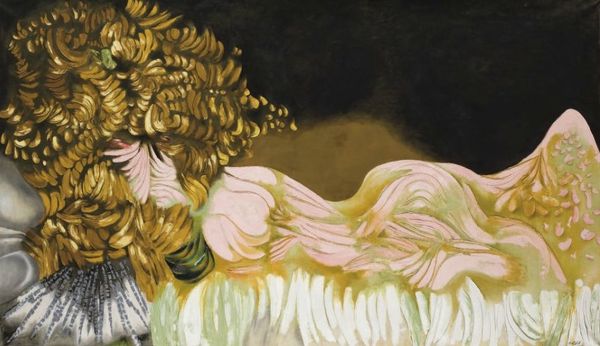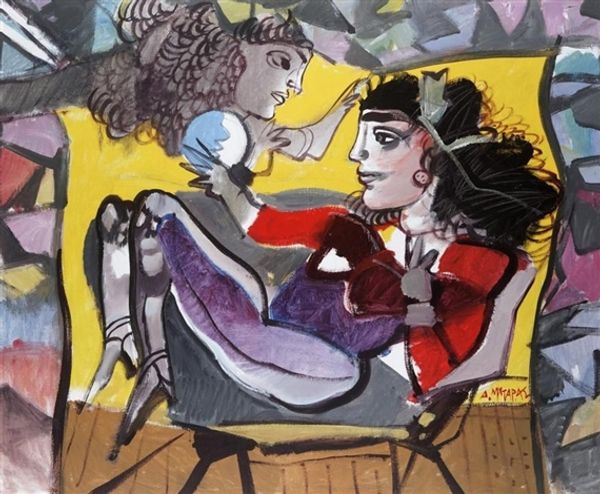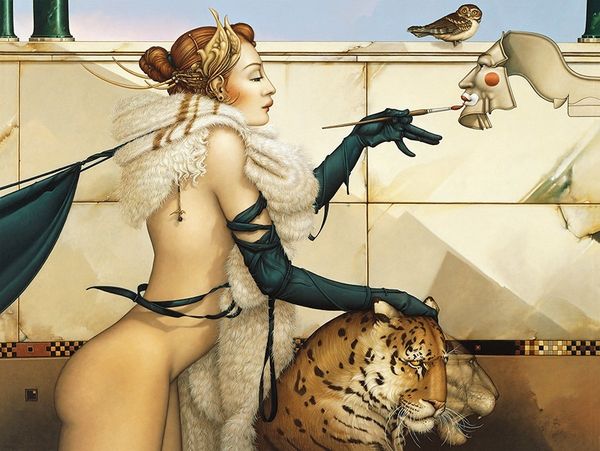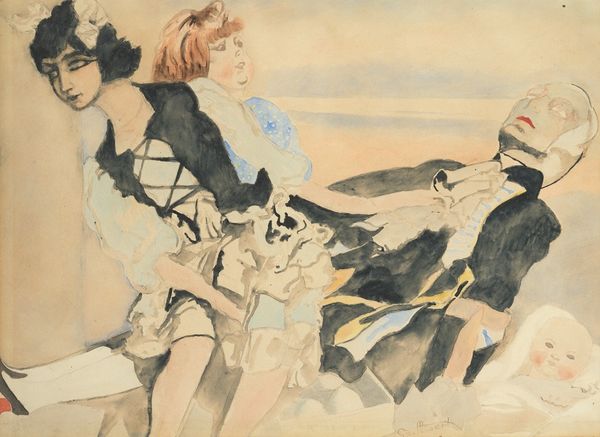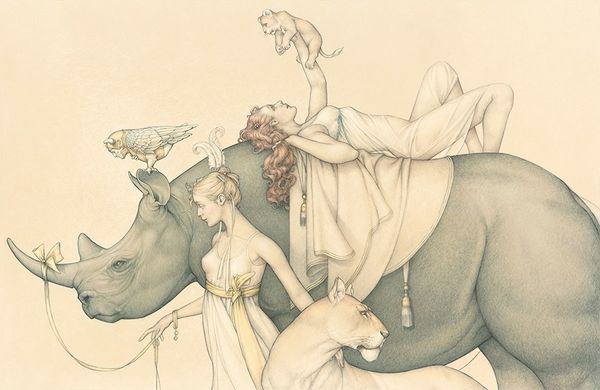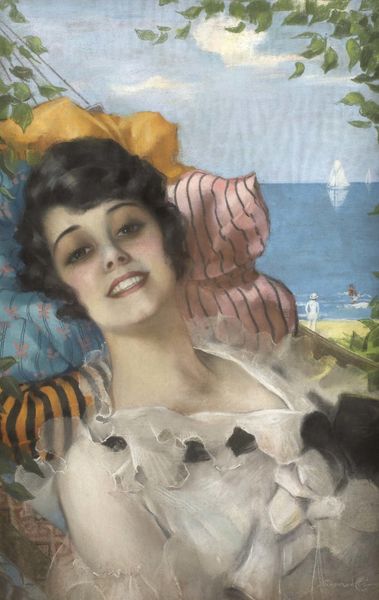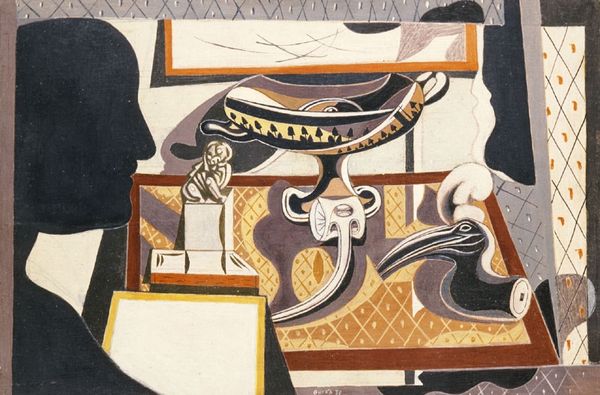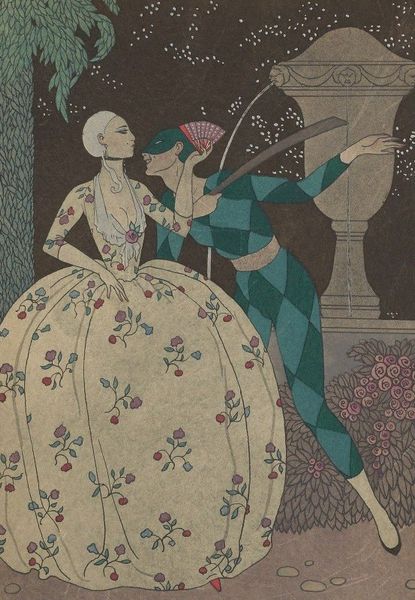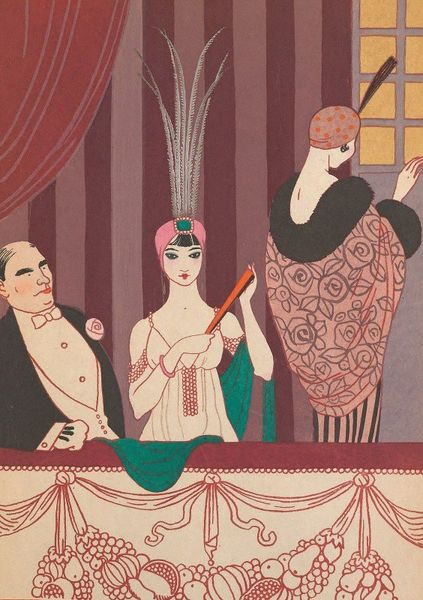
drawing, pencil
#
portrait
#
art-deco
#
drawing
#
facial expression drawing
#
character portrait
#
caricature
#
figuration
#
pencil
#
portrait drawing
#
portrait art
Copyright: Jean Dupas,Fair Use
Curator: Jean Dupas' 1928 drawing, "The Riding Crop," presents a striking Art Deco portrait, rendered in pencil. What's your initial reaction to it? Editor: My immediate thought is one of ambivalent power. There's a sense of both fragility and control emanating from the sitter—perhaps due to her slender neck juxtaposed with the commanding riding crop she holds. Curator: Indeed, the verticality of her neck and the riding crop create a strong directional line. The drawing style is typical of Dupas, where simplified forms intersect with more decorative, curvilinear elements to direct our eye around the composition. Look at how he juxtaposes hard and soft textures and light and shadow through careful strokes of the pencil. Editor: Exactly. Her elegance feels intentionally aloof, especially considering that in the late 1920s, during the interwar era, gender roles were shifting but remained deeply policed. A woman holding a riding crop could be seen as provocative—subverting patriarchal dominance. Is she in control of the horse, or of something bigger? Curator: Perhaps that is secondary to the formal arrangements within the work itself. Consider the balance between positive and negative space, the angularity softened by the subtle modeling of her features. It’s this harmony of composition that anchors our perception. Editor: But isn't the formal composition *also* a reflection of social control and power dynamics? The elegant elongated forms give the impression of sophistication that was available only to some—likely an elite social circle far removed from working class struggle. The visual vocabulary speaks of coded luxury. Curator: Certainly, it’s a portrait reflecting a specific social milieu. Consider, too, how Dupas utilized line to emphasize details: the delicate veil, the ornate collar. All carefully drawn to convey her privileged background through mastery of medium. Editor: Those exquisite details also betray the construction of idealized femininity at that moment in time. Her beauty feels almost weaponized. Ultimately, her gesture implies an inherent understanding of her place and a deliberate, knowing gaze. It's difficult to detach that message from the elegance you're admiring. Curator: Perhaps. Regardless, what we've hopefully illuminated for our listeners today is how much complexity can be present within a single drawing—where form and context create meaning in both independent and relational contexts. Editor: Yes, a true Art Deco power pose loaded with material and socio-political considerations!
Comments
No comments
Be the first to comment and join the conversation on the ultimate creative platform.
